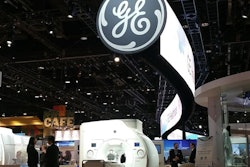Ultrasound is often the imaging modality of choice for symptomatic uterine fibroids, but MRI has grown in popularity due to its ability to better characterize the location and type of fibroid, according to senior study author Dr. Olga Brook from Harvard Medical School. It can also help diagnose alternative pelvic pathology.
"When symptoms require interventions beyond medical management, MRI plays a crucial role in determining the best treatment option as it allows for exact surgical planning, whether by minimally invasive gynecologists or by interventional radiologists," Brook told AuntMinnie.com. "Certain key features are important when planning invasive fibroid treatment, such as size and location of the fibroids, proximity to the uterine serosa or endometrial cavity, vascular supply, coexisting adenomyosis, etc."
The researchers collaborated with gynecologists and interventional radiologists to develop a structured template for MRI reporting of uterine fibroids that would optimize clinical decision-making for fibroid management. They then sought to objectively compare narrative reports and structured reports of MRI for fibroid evaluation to assess their usefulness in helping gynecologists and interventional radiologists successfully plan their respective procedures.
The structured reports missed an average of 1.2 ± 2.5 out of 19 key features, while narrative reports missed an average of 7.3 ± 2.5 key features, according to Brook.
"Structured reports were more helpful and easier to understand by referring physicians for treatment planning of patients with uterine fibroids," she said.
Get all of the details by attending this presentation on Tuesday afternoon.



















